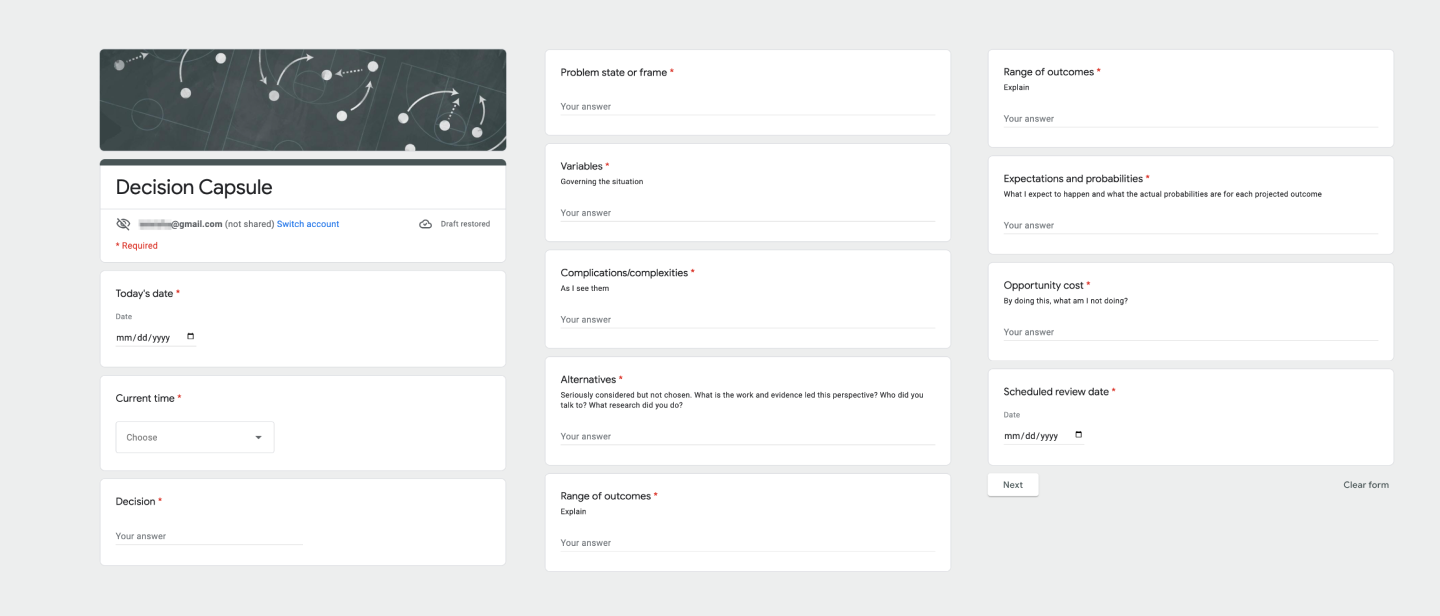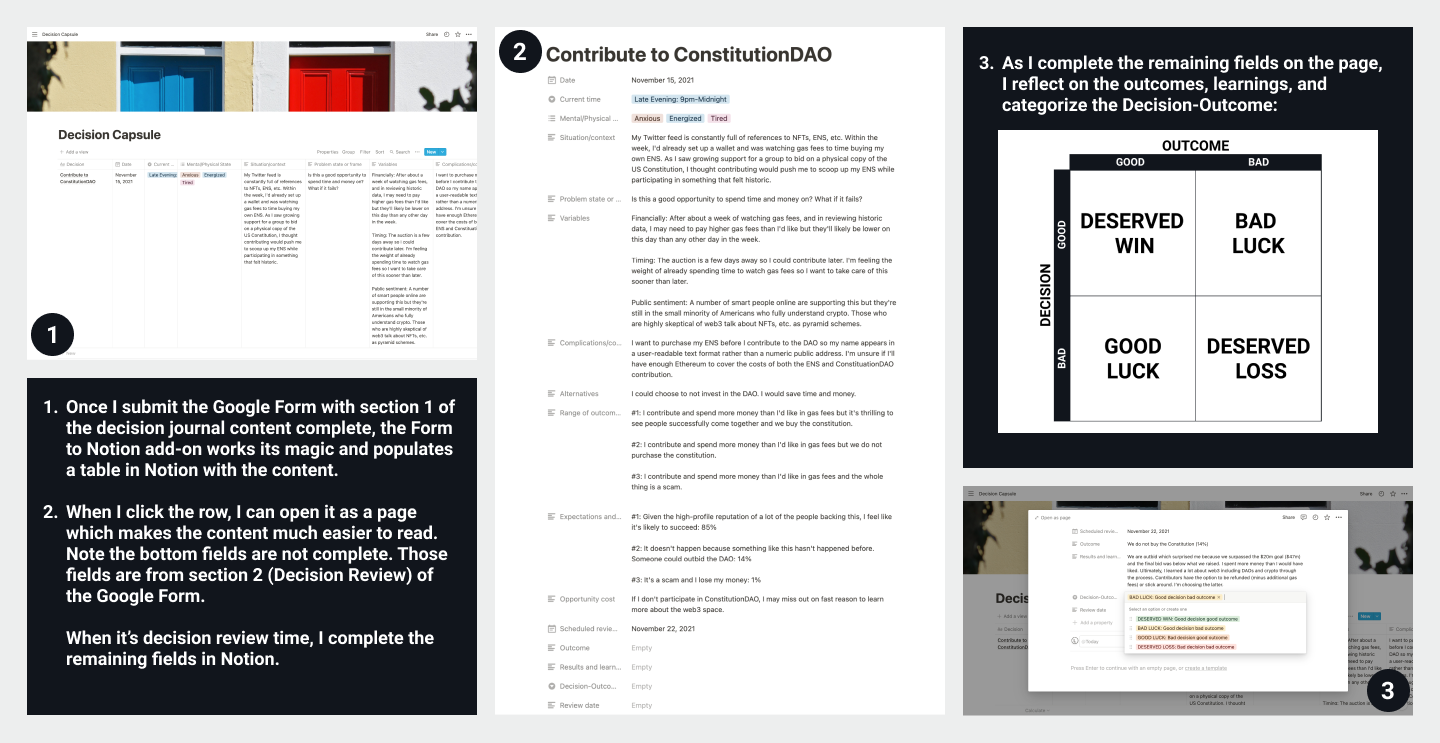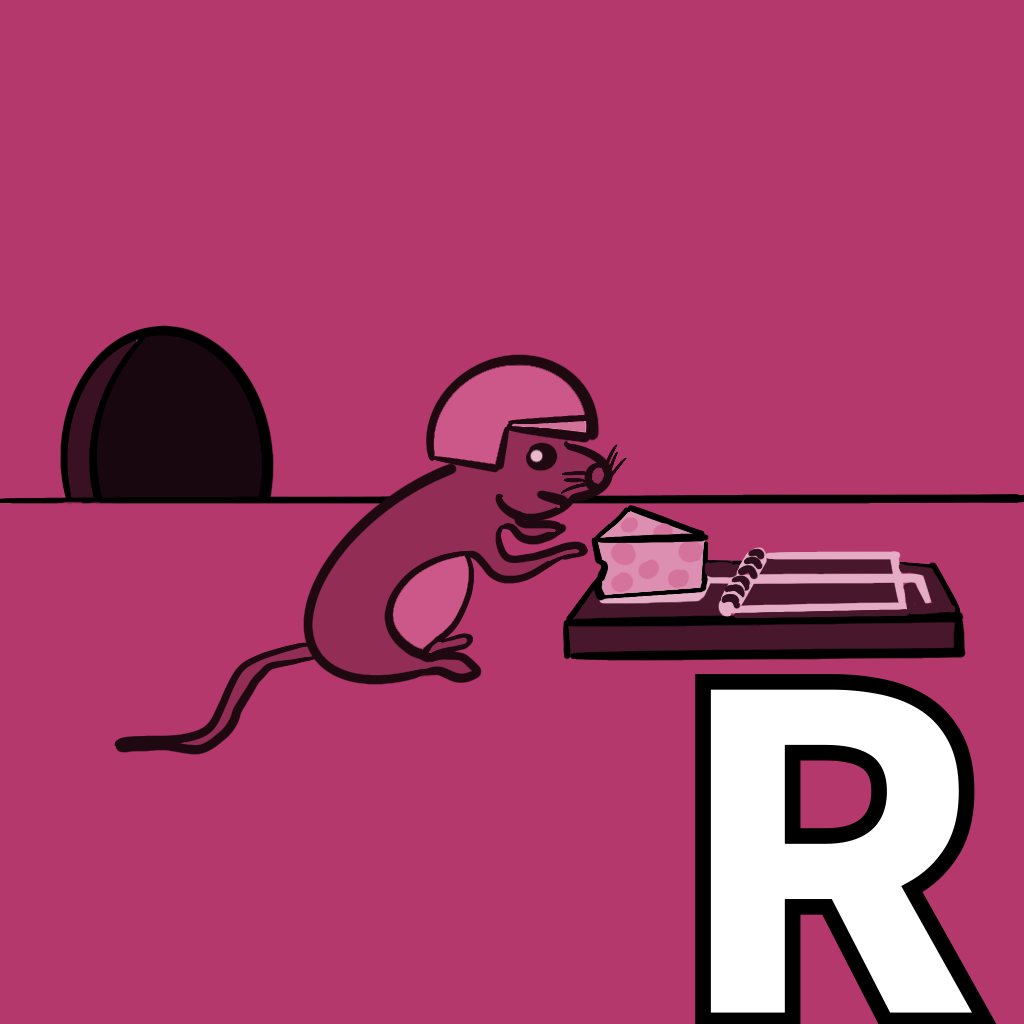ILLUSTRATION
To illustrate risk, I considered these concepts:
- Scales with risk and reward
- Leaping over danger to success
- Poker hands
- Umbrella for a rainy vs sunny day
- Decision flow chart
- Breaking from a pack
- Spectrum from low to high
- Russian roulette
- Thermostat that you can adjust
- Risk equation expressed by the probability of failure x consequences
- Mouse with a mousetrap
Ultimately, I chose to represent risk through the image of a mouse and a mousetrap. The cheese acts as the reward and the the mousetrap represents the possibility of loss, including injury or death. I came across a cartoon mouse wearing a helmet so I thought my mouse should wear one, too.
INSPIRATION
My work within the design and innovation space means I’m often de-risking ideas. I facilitate sessions where we explore assumptions and identify the riskiest ones to test. I design prototypes to validate assumptions and further mitigate risk.
I reflected upon life-defining risks I’ve made: being the first to say “I love you,” quitting my job without another lined up, going to a college across the country without visiting first…I considered everyday risks: choosing to order from a new restaurant, crossing the street, not setting an alarm clock…I realized procrastination is a form of risk and later discovered the related concept of a passive risk. And I thought about my regrets over the risks I didn’t take.
Exploring beyond my personal associations with risk took me down a rabbit hole: Nassim Taleb’s concept of antifragility, Annie Duke’s “thinking in bets,” and Daniel Kahneman’s work on human decision-making. I reviewed risk matrices, risk tolerance, risk preference, risk fingerprints, risk empathy, risk compensation, risk ecosystem…I even took a few risk assessments where I received the highest score on a risk literacy test (thank you high school statistics!), identified my risk type, and wondered where I’d fall on the Domain-Specific Risk-Taking (DOSPERT) and Passive Risk-Taking (PRT) scales.
CREATION
After sifting through and sitting with so many concepts around risk, I kept coming back to the connections between risk and uncertainty, decisions and outcomes, luck and skill.
In The Knowledge Project podcast, Shane Parrish interviews retired poker champion and current co-founder of The Alliance for Decision Education, Annie Duke. She shares three learnings about decision-making from her book:
- Say, “I’m not sure” more. Don’t conflate confidence with certainty. Share your decision making process, your sources of information, and that your beliefs are under construction. You’ll be more believable because you’e being thoughtful about, and essentially inviting others into, the process.
- It’s hard to do it on your own. Find or create a group that will watch your back [as you make and evaluate decisions] and you can watch theirs.
- Become a good time-traveler. Absorb pain if it’s better for you in the long run. “Let the hindsight of your future self become the foresight of today’s self.” Get the future version of you to be involved in the decision making of the present version of you.
These lessons are the muse for my project: a Decision Capsule. Present day me can fill that virtual vessel with the context and analysis of today’s decision and set a timer for future me to send back. This creates a decision-making group with versions of my self, as a decision futurist and a decision historian. And I can expand that decision analysis committee to include friends and colleagues where we might all use the Decision Capsule to keep ourselves honest in the present.
The core of my capsule is a decision journal. Interestingly, Annie Duke says she doesn’t use a decision journal because she learns about her decision making through conversations. I believe the Decision Capsule’s journal can be a tool for the group conversations she recommends. I’m sure I can find value in creating or finding that group but in the meantime, I’ll start with prototyping the capsule. Farnam Street, creator behind the podcast I referenced, shared a decision journal template so I begin with that.
I adapt prompts from the template's PDF to a Google Form. I find a way to connect Google Forms to a Notion table using an add-on called Form to Notion. I complete the form as a test, using details from a recent decision I made to contribute to ConstitutionDAO.
Consti-tu-sh-what? ConstituationDAO is a type of DAO(aka Decentralized Autonomous Organization) composed of crypto fans that grew exponentially over a matter of days along with their donations. The goal for this rapid crowdfunding was to use Ethereum, a cryptocurrency, to bid on and buy one of the remaining privately held copies of the US Constitution at a Sotheby’s auction. After watching the news unfold on my Twitter feed, I decided to participate.
I could review my recent decision-making to test the Decision Capsule process from end-to-end since I know the outcome of ConstitutionDAO.

When I submit the Google Form, a row appears in my Notion table (thanks to the Form to Notion add-on). I can open that row into a page which is easier to read than the table. The page has contents from the form's section 1 (pre-decision) and the fields from section 2 (post-decision); the latter is completed when I review the decision after the outcome. To remember to complete those fields, I set and test a reminder on the Notion page. When I get the notification email, I complete the details around the outcome and mark which quadrant the decision-outcome fell.

REFLECTION
I’m pleased with the result! The tool can improve my skill around decision-making and could be used with accountability groups and teams as well. The latter I would still need to test so let me know if you’re interested in participating in a group by replying to the newsletter.
CONNECTION(S)
For curated links and other content I couldn't fit into this post, check out the email newsletter.
